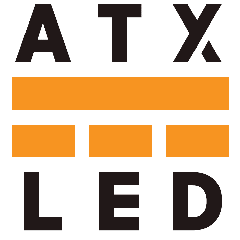PoE vs AWG
We started with PoE lighting – why did we switch to AWG 18/2 instead of CAT-6 and RJ45?
| Aspect | PoE - CAT-6 | AWG 18 |
|---|---|---|
| Ease of change | Very high – one plug | Between 2 and 9 wires to move |
| Driver cost | $50–$150 per LED, plus LED | About $5 per LED |
| Wall switch cost | Needs a smart switch in each room | As low as $1 for a simple on/off switch |
| Number of home runs | One for each group of LEDs; a closet with one LED requires a run | One home run for 16 LEDs and up to 10 wall switches |
| Provisioning | Home does not light up until wall switches are mapped to PoE loads | Home lights up without any configuration |
| LED options | ?? | Flat puck, recessed, E26, E12, MR16, strip, tunable white, etc. |
| PSE cost (PoE switch vs load center) | PoE switch 802.3at, rack mount with fan, $1 per watt for UL listed PoE PSE; redundancy is expensive | PSE load center cost ~$0.50 per watt, includes redundancy, fits inside 4-inch studs |
| Frequency of change | With each office renovation, wall move | Almost never |
| Power losses |
a) 3% overhead loss b) ~1% transmission loss c) 802.3af has a 300 mW standby per port |
a) No autonegotiation, no loss b) Same c) No standby loss |
| Electronics in each LED | Complete PD electronics, plus LED | Zero; only the LED itself |
| RJ45 installation | Commercial prefab cables and wire trays simplify install | Residential has no wire trays; terminating RJ45 on ladders is complex and requires expensive labor |
Value Products (lowest cost)
For 3-way with 48v 6W type fixtures, and two switches controlling the same set of lights, the lights will be wired together in parallel. This wiring is identical to 120VAC wiring.
Switches A and B are 3-way type Home Depot switches placed on different sides of a room. Between A and B, a "traveler" wire with 18/2 is used. To allow for future upgrades, please also provide unswitched +48V at the "B" switch.
For lowest cost initially, the "future" Red and Black at B are not used. At Switch "A", run an 18/5 as the home run.

A setup with A, B, and C switches is also possible, but the switch in the middle needs to be DPDT (this is identical to 120VAC wiring).

Later converting to a smart switch means:
a) replacing A with an AL-WS-DR2
b) replacing B with an AL-WS-M, disconnect the Red at B
c) connecting the Red to the AL-WS-DR2 at A
AL-WS-DR1 – Add Dimming, with 3-Way
Easily add dimming functionality while retaining 3-way control with the AL-WS-DR1. Perfect for versatile lighting setups across your smart home.


Signature Products – AL-WS-DR2 3-Way Wired Momentary

AL-WS-DR2 AL-WS-M AL-WS-M
The Smart Products have an N-WAY input. The default operation for this input is to allow multiple switches to control the lights attached to the AL-WS-DR2.
There are additional operational modes for this smart input:
- 3-Way switch for any other DALI address in the project
- Push Button for interpretation as a Macro by the smart hub
- Contact for Door Open/Close detection
Signature Products – AL-WS-DR2 3-Way Wired Rocker
The Momentary switch can be replaced by an On/Off rocker switch. This is not typical, but is supported.
Signature Products – Tandem Mode
Tandem mode 3-Way is built into all ATX LED drivers. It means that if a DALI light level command is received, the physical switch will toggle the light. In this way, from 2 up to 63 addresses can remain in sync and operate as one large switch controlling up to 512 lights. Use ZWD to configure simply.
Signature – AL-WS-DR2 Programmable Button – Virtual 3-Way
AL-WS-DR2 with remote AL-WS-M as 3-Way – without in-wall hard wiring
The Main switch or the N-Way input can be given a 2nd DALI address. Each press toggles On/Off, hold to dim. Use ZWD to configure easily.
| Stored Value | Function | DALI Sent | Type |
|---|---|---|---|
| 0-63 | Internal Driver Short Address | 0-63 | Individual * |
| 64-79 | Internal Driver Group Address | 0-15 | Group * |
| 80-95 | Send DALI 271 (0xBF) | 0-15 | Trigger |
| 96-127 | Send DALI 271 (0xBF) + OnOff * 16 | 0-15 Off, 16-31 On | Toggle |
| 128-191 | Nway Short Address | 0-63 | Individual |
| 192-207 | Nway Group Address | 0-15 | Group |
| 208-223 | Nway Scene | 0-15 | Scene |
| 224-239 | Nway Scene with Undo | 0-14 (15 used for undo) | Scene |
| 252 | All Off | 0xFF00 | Broadcast |
| 253 | On @ Max | 0xFF05 | Broadcast |
| 254 | On / Off / Dim | 0xFExx | Broadcast |
| 255 | Disabled | none | No Action |
* Do not use in N-Way control applications – only use if you intend to split the DR2 into 2 addresses to receive DALI commands.
Wireless 3-Way Controls
A handheld remote can be used to execute any lighting control command either via the DALI control bus with signature devices or direct to the driver. Other applications include fan motor control, motorized shade control, LCD tinted windows, and more.
| Type | Radio Type | Battery | Button | Receiver | Supplier | Hub Needed | Link |
|---|---|---|---|---|---|---|---|
| Buttons | Z-Wave | yes 2032 | 4 | usb + Hub | Nie | yes | Amazon Link |
| Button | 902mHz | None - Kinetic | 2 | usb + Hub | Atrim | yes | |
| Button | 902mHz | None - Kinetic | 2 | AL-WS-DR1K | ATX | no | |
| Motion Sense | Z-Wave | 2032 | Motion | usb + Hub | szNeo | yes |

